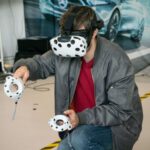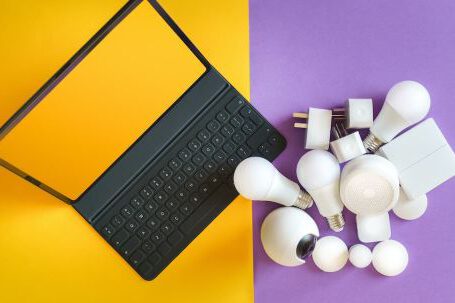The automotive industry is constantly evolving, and with advancements in technology, designers are finding new and innovative ways to enhance the driving experience. One such technology that is making waves in the industry is augmented reality (AR). Augmented reality is the overlay of digital information onto the real world, creating a blended environment. In the realm of automotive design, AR is revolutionizing the way vehicles are designed, manufactured, and experienced. Let’s take a closer look at how augmented reality is influencing automotive design.
Design Visualization and Prototyping
One of the significant ways augmented reality is impacting automotive design is through design visualization and prototyping. Traditionally, designers would rely on 2D drawings or clay models to visualize their concepts, which often resulted in limited perspectives. With AR, designers can now create virtual 3D models of their designs and project them onto a physical space. This allows designers to see how their designs will look and function in real-world settings, enabling them to make more informed decisions during the design process.
Improved Collaboration and Communication
Collaboration is a crucial aspect of automotive design, involving various teams such as designers, engineers, and manufacturers. Augmented reality facilitates better collaboration and communication among these teams. By using AR headsets or mobile devices, team members can view and interact with virtual models simultaneously, regardless of their physical location. This real-time collaboration streamlines the design and development process, reducing errors and saving time.
Enhanced Safety and Ergonomics
Safety and ergonomics are paramount in automotive design. Augmented reality is playing a significant role in improving these aspects by allowing designers to simulate and evaluate various safety scenarios and ergonomics before the vehicle reaches the manufacturing stage. For example, designers can use AR to simulate the driver’s field of vision and identify potential blind spots. They can also evaluate the ease of use of interior controls and make adjustments to enhance ergonomics.
Virtual Showrooms and Customization
Augmented reality is transforming the traditional showroom experience. With AR, customers can now use their smartphones or AR headsets to visualize and customize vehicles in a virtual showroom. This allows customers to see different paint colors, interior options, and even test drive the vehicle virtually. By providing a more immersive and interactive experience, AR is enabling customers to make more informed decisions and personalize their vehicles.
Training and Maintenance
AR is also influencing automotive design by improving training and maintenance processes. Designers can create AR-based training modules to educate technicians on how to assemble, repair, and maintain vehicles. This reduces the reliance on traditional manuals and enables technicians to access real-time information and guidance through AR headsets or mobile devices. AR also aids in remote assistance, where experts can guide technicians through complex maintenance procedures using live video feeds and virtual overlays.
Future Possibilities
The impact of augmented reality on automotive design is only scratching the surface. As technology continues to advance, we can expect even more exciting developments in this field. For instance, AR could be used to create fully immersive driving experiences, where drivers can interact with virtual objects and receive real-time information without taking their eyes off the road. Furthermore, AR could enhance vehicle-to-vehicle communication, allowing vehicles to share information and improve safety on the roads.
In conclusion, augmented reality is revolutionizing automotive design in numerous ways. From design visualization and prototyping to improved collaboration and communication, AR is reshaping the way vehicles are designed and manufactured. With its ability to enhance safety, personalize experiences, and streamline training and maintenance processes, augmented reality is undoubtedly a game-changer in the automotive industry. As technology continues to evolve, we can expect augmented reality to play an even more significant role in shaping the future of automotive design.





